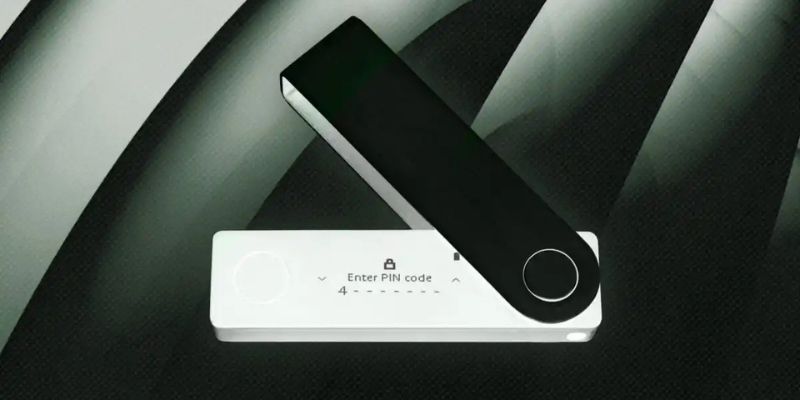Centralized crypto exchanges enable users to store their assets in a hosted wallet by retaining control of their private keys. However, successive exploits of crypto exchanges highlight the risks of entrusting private keys to third parties. The challenge has led to the development of increasingly complex non-custodial storage solutions such as hardware wallets (a type of cold wallet), which keep private keys offline.
Unlike hot wallets, which are stored on your computer or mobile device, hardware wallets are physical devices that hold your private keys. This makes them more secure than software wallets, as they are less vulnerable to hacking or malware.
However, despite their reputation as a more secure method of crypto storage, they are not risk-free. In this article, we will examine 5 of the biggest threats that hardware wallets face.
1. Threats to Physical Security

Hardware wallets are physical devices, which means they are vulnerable to the same physical risks as any other gadget, such as being lost, stolen, or damaged. However, with a safe seed phrase, physical threats can be mitigated as crypto assets can be recovered from lost or damaged wallets. Poor configuration of the hardware wallet due to malicious tampering can enable an attacker to physically access the device and obtain the user’s private keys.
2. Power Glitching
Power glitching refers to fault-injection attacks that involve creating errors to disrupt the wallet’s expected behavior without rendering it inoperable. By manipulating voltage modulations (either above or below the expected voltage), an attacker can force a wallet to behave abnormally, granting access to the recovery seed. This attack vector requires the hacker to be in physical possession of the hardware wallet.
3. Firmware Risks

The firmware on a hardware wallet can also provide a security concern. If an attacker can modify the firmware on a hardware wallet, they may be able to extract the user’s private keys or undermine the device’s security in some other way. For this reason, it is essential to purchase hardware wallets from trustworthy manufacturers and validate all firmware updates before installation.
4. Side-Channel Attacks
Side-channel attacks are a type of vulnerability that exploit the physical characteristics of a system to obtain information that would otherwise be inaccessible. One example of a side-channel attack is using electromagnetic emissions from a device to infer the data being processed by that device. Side-channel attacks have been used to extract crypto keys from hardware wallets. In order for side-channel attacks to be successful, an attacker must have knowledge of the implementation details of the system they are targeting, as well as access to the device.
5. Social Engineering Dangers
Even if a hardware wallet is physically safe and well-protected against malware, an attacker could still attempt to obtain access to the user’s private key via social engineering, such as through phishing emails. Users of hardware wallets should therefore be aware of these types of attacks and how to defend against them.
All Hardware Wallets Are Not Equal

When considering the right hardware wallet to go for, it is vital to bear in mind that various wallets carry varying degrees of security and tradeoffs in usability. Key differentiating features include physical construction, mobile support, USB connectivity, overall UX, and the range of cryptocurrencies supported by the software.
While hardware wallets are commonly regarded as one of the most secure ways to store cryptocurrency, they remain vulnerable to specific attack vectors. The risks we have examined in this post can be largely mitigated by following some of the steps outlined in our previous article outlining how hardware wallets can be hacked.
For more information on the latest news and updates in the world of technology and finance, visit Instant Global News.
FAQs
Q: Are hardware wallets completely secure?
A: While hardware wallets are considered more secure than software wallets, they are not entirely immune to threats. Users must take precautions to protect their hardware wallets from physical theft, firmware tampering, side-channel attacks, and social engineering attempts.
Q: How can I enhance the security of my hardware wallet?
A: To enhance the security of your hardware wallet, consider the following steps:
- Purchase hardware wallets from reputable manufacturers.
- Validate all firmware updates before installation.
- Implement physical security measures to protect your hardware wallet from theft or damage.
- Stay vigilant against social engineering attacks and phishing attempts.
Q: Can all hardware wallets be hacked?
A: While hardware wallets are generally secure, no security measure is foolproof. Different hardware wallets may have different vulnerabilities and levels of security. It is important to do thorough research and choose a hardware wallet from a trusted manufacturer.
Conclusion
Hardware wallets offer a more secure method of storing cryptocurrencies compared to software wallets. However, they are not without their own set of risks. Understanding the potential threats to hardware wallets and taking necessary precautions can help users safeguard their crypto assets. Stay informed, stay secure!


